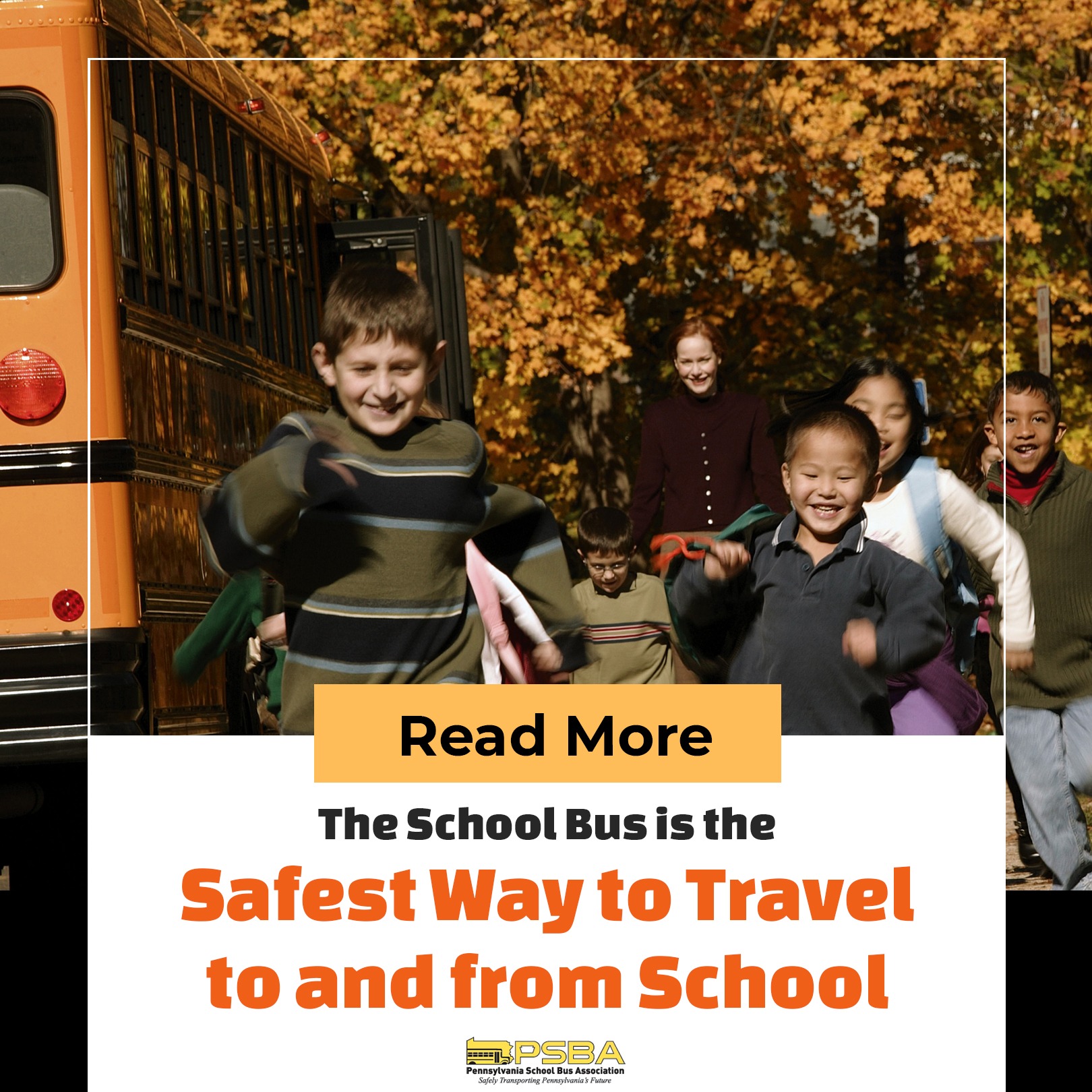Around 25 million students nationwide start and end their day with a trip on the school bus. School buses are designed specifically with the safety of the students and driver in mind.
School buses use compartmentalization to protect students. The seats are closely spaced and have high, energy-absorbing seat backs, plus seat belts.
The National Highway Traffic Safety Administration (NHTSA) states that students are 70% more likely to arrive safely when taking the school bus instead of traveling by car.
With school buses, parents don’t have to worry about their children while on their way to school. Numerous studies prove that school buses that comply with federal regulations are considered the safest way to transport children to and from school. The American School Bus Council (ASBC) conducted a study and reports that students who ride a bus are 50 times more likely to arrive at school alive than driving by themselves or riding to school with friends.
Compared to other modes of transportation, school buses are the safest way for students to travel. According to SchoolBusFacts.com, nearly two-thirds of bus-related fatalities of school-age children occur outside of the school bus.
Despite these encouraging figures, there is always room for improvement as new risks emerge. For instance, there’s the recent focus on adequately training school bus drivers on how to handle an ongoing shooting scenario. This situation hadn’t been a significant risk among school buses in the past. But with the rising cases of shootings in the country, this kind of training has increasingly become an urgent requirement among school bus drivers.
While school districts cannot control all drivers, they can look for other ways to make school student transportation as safe as possible. One way is to educate students and their parents about bus safety and driving safely.
Tips for a safe ride
Students need to do their part to ensure safety in and around the bus. The ASBC offers the following tips:
At the bus stop:
- Begin your school morning early enough so that you won’t find yourself rushing to get to the bus stop. It helps to arrive at least five minutes before the bus is expected to arrive.
- Stand six feet or three giant steps from the curb as you’re waiting for the bus.
- Have an adult, or older child, supervise young children as they wait for the bus.
Around the bus:
- Be sure to cross in front of the bus – at least ten feet (or five giant steps). Make eye contact (and smile or wave) with the school bus driver before crossing the street.
- Don’t walk behind the bus.
- Alert the driver if you accidentally drop something near the bus.
Getting on and off the bus:
- Please wait until the school bus is stopped and its doors open before approaching the bus.
- Use the handrail.
- Make sure to secure any loose, hanging, or dangling objects (such as straps on a backpack or drawstrings on a hood).
Behavior on the bus:
- Buckle up if seat belts are present.
- Remain in your seat, keeping your head, arms, and papers inside the bus. Talk quietly.
- Keep the aisles clear of bags and books.
Read our article PA School Bus Drivers Know How to Handle Snow to learn more.
If you love children and working with them – and making sure that they’re safe while going to and from school – then being a school bus driver might be your next calling! The available jobs on https://schoolbushero.com/jobs only await your call – so, apply now!

